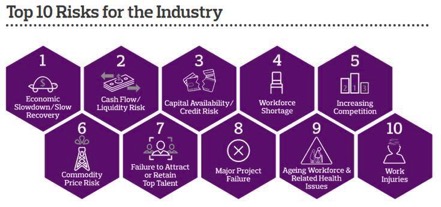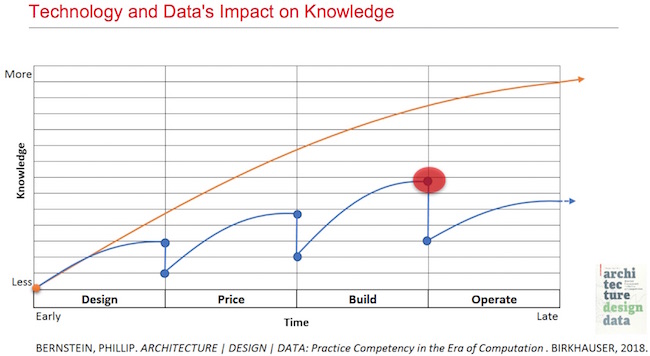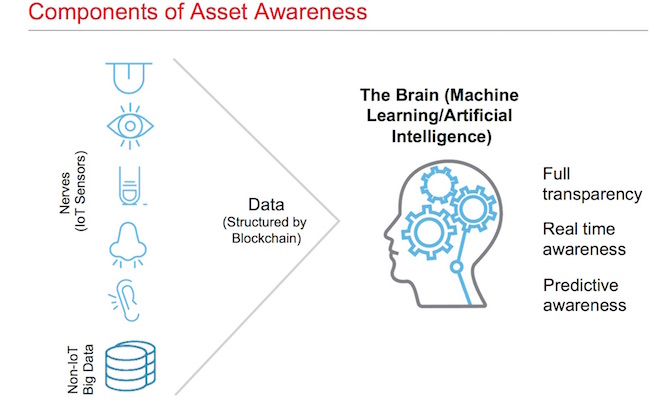
The construction data journey: Start now!
By David Bowcott and Chris Greene
Risk Management Software
With technology advancing throughout the construction industry, contractors should start on their construction data journey sooner rather than later. PHOTO: Adobe Stock/Pamela Au
Whether you are an owner, design firm, or contractor, the construction sector faces several major challenges in the coming years. Capital availability, workforce shortages and increasing competition are just a few of the top risks identified by key leaders within the global construction economy as part of Aon’s 2019 Global Risk Survey. Up against financial risks, such as the possibility of an economic slowdown and cash flow/liquidity issues, as well as labour-related challenges, like the failure to attract the best talent, the construction sector must start implementing solutions to address these major risk categories.

There are many paths those in the construction community can go down to mitigate these very real current and future risks, however, many believe the foundational step is establishing a sound data strategy.
The construction sector lags almost all other areas of the economy when it comes to data sophistication. This lack of sophistication is largely due to the way construction operates in its current incarnation. The figure below, for instance, illustrates the amount of knowledge/data lost during each construction project.
Each phase in the life of the asset being constructed is siloed, resulting in significant data loss as the knowledge created in one phase is transferred to another phase. Most believe the highest level of asset knowledge is held by the contractor as they transfer the newly completed asset to the owner to operate and maintain. This knowledge, or data loss must end if we are going to improve the on-time, on-budget and operational efficiency results of the construction and asset management industries.
Represented by the orange line in the figure below, the industry could greatly improve organization and lessen knowledge loss by properly handing off data at the end of each stage of an asset’s life. This loss of knowledge is just one example of how construction currently lacks the data sophistication to deal with future risks.

There are also several others:
- Unique teams for each project: The construction sector almost always uses new design firms, main contractors, subcontractors/suppliers and owners when building a new asset. Much of the knowledge/data from previous builds is lost as each party to that build goes onto their next unique project
- Aging workforce: Most of the data within the construction sector is housed within the minds of employees. Staff leaving a company through retirement or other forms of turnover causes a loss of knowledge
- The unknown factor: Given the significant number of unknowns associated with the construction sector – things like underground risk, weather risk, existing structures risk, there is skepticism around technology and data being able to create predictive results.
Faced with these, along with several other factors, the construction sector has struggled with data science sophistication. But in the last few years there has been an increase in the motivation to improve data sophistication, largely due to the enabling potential of new technologies coming to the construction sector. The bottom line is, there is no better time for all construction stakeholders to begin their journey to an improved data sophistication state.
THE JOURNEY
No matter what your role is within the built world environment: design, construction, operations, or any derivative sector; we must all move forward together to make construction a more efficient, productive, and less risky industry – a win for all stakeholders. The road we each take on our data journey will inevitably find common ground where we are all truly connected and can reap the benefits of synergy through data collaboration across all phases of the asset. With the right groundwork laid out, the construction data journey can be a much easier transition.
This starts with building a team capable of helping you break through and slingshot into the Industry 4.0 built world. Many construction stakeholders have already started hiring C-suite executives that are responsible for digital enterprise initiatives. Chief information officer (CIO), chief technology officer (CTO), chief digital officer/chief data officer (CDO), enterprise intelligence officer (EIO) are a few of the leadership positions that can launch a company on their data journey. It is not just about IT anymore, positions like these are vital to success as we move into the next generation of the built environment and those in these positions will need to work with all areas of their companies, and all areas of their projects/assets, to extract the data from everywhere to make better decisions.
The right team not only knows where to steer down the data road, but also what vehicles to use, and how various vehicles will combine to create the best decisions. Data needs to be identified, collected, stored, cleaned, assessed and accessed using all the right tools to extract maximum value from the data and make the process optimally sustainable.
Where is all the data? The list is can go on into the thousands. It is not easy for a company to determine where all the sources of their data reside. It takes the entire company and all project stakeholders to come on board and have at least some kind of foundational training around why it is important to have a data strategy. All employees need to take ownership of how they can help identify and aid in the transmission of data sources, including their own industry knowledge and experience.
For us to truly keep up with proper data management between each phase of the asset’s life, we must collect data from the furthest creeping roots of the company and the project/asset. Paper files, emails, text messages, spreadsheets, enterprise accounting, resourcing platforms, point solutions, IoT devices, insurance data, industry data, weather data and many more sources come into play when realizing the data opportunity. Luckily, there are already a few great construction technology solutions in the market that take the headache out of doing a manual data assessment to cover all the bases. Harvesting and harnessing this data without losing portions of it between stakeholders and phases of the asset’s life, is the key to harnessing your companies’ competitive advantage moving into the next generation of the industry.

Once you have a data strategy in place and begin building momentum, you will start to gather a clearer picture of where all your problems and risks are rooted throughout the life of the asset. Identifying the problem areas using machine learning algorithms will lead to a more predictable outcome for business processes (see the figure above). There will also likely be several surprises that add to the value of the data investment. Having a complete view into the data flow of the asset, alongside triggers for risks, ensures the next phase of the asset can work with the best possible foundation and keep reducing the risks and increasing predictability all the way down to the operational phase.
As you approach a mature state on your data journey, there will be a shift in company culture as the value of data will have proven itself to your entire organization. Decision-making often becomes easier and many of the once time consuming and monotonous tasks can be eliminated, making room for more critical thinking and strategy. Using the data of the past and dynamic present essentially creates a platform to investigate the future, which will allow you to predict failure, improve certainty of outcome, increase margins and create a competitive advantage for your organization. This new world will create synergies between all stakeholders, throughout all phases of the asset’s life, and thus create more value than the construction and asset management sectors have ever seen in the past.

David Bowcott is global director – Growth, Innovation & Insight, Global Construction and Infrastructure Group at Aon Risk Solutions.
Chris Greene is assistant vice-president – Data & Analytics at Aon.
This column first appeared in the December 2020 edition of On-Site. To read through the whole issue click here.




